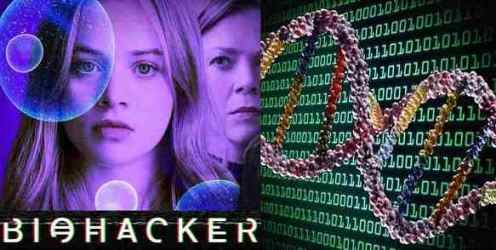
Views: 29
– Genetic material as a stable storage method allows large amounts of data to be stored in synthetic DNA.
Minapim by Hernan Valenzuela: The storage of TV program Biohackers series in the form of synthetic DNA, was made possible by the research of Prof. Reinhard Heckel of the Technical University of Munich – TUM and his colleague Prof. Robert Grass of ETH Zürich. They developed a method that allows stable storage of large amounts of DNA data for more than 1000 years.
The storage was performed using artificially generated, in other words, synthetic DNA. DNA consists of four building blocks: the nucleotides adenine (A), thymine (T), guanine (G) and cytosine (C).
The computer data, in turn, is encoded as zeros and ones. The first episode of Biohackers consists of a sequence of about 600 million zeros and ones. To code the 01 01 11 00 sequence in DNA, for example, we decide which combinations of numbers will correspond to which letters.
For example: 00 is A, 01 is C, 10 is G and 11 is T. In the example, then it generates the CCTA DNA sequence. Using this principle of storing DNA data, the first episode of the DNA series was stored.
To see the series the process is reversed, when writing, storing and reading DNA, however, errors occur. If these errors are not corrected, the data stored in the DNA will be lost.
To solve the problem, an algorithm based on the channel encoding was developed. This method involves correcting errors that occur during the transfer of information. The underlying idea is to add redundancy to the data. In comparison to language: when we read or hear a word with missing or incorrect letters, the computing power of our brain is still able to understand the word.
The algorithm follows the same principle: it encodes the data with sufficient redundancy to ensure that even highly inaccurate data can be restored later.
Although channel coding is widely used, the team faced some challenges; the first challenge was to create an algorithm aimed specifically at the errors that occur in DNA.
The second was to make the algorithm so efficient that the largest possible amount of data could be stored in the smallest possible amount of DNA, so that only the absolutely necessary amount of redundancy was added. It was demonstrated that the algorithm that was used was optimized in this sense.
The storage data method
Today the storage of DNA data is very expensive due to the complexity of DNA production and the reading process.
This method becomes attractive, since DNA has a very high information density. This allows for the storage of huge volumes of data in a minimum space.
In the case of the TV series, “only” 100 megabytes were stored in a picogram – or a billionth of a gram of DNA. Theoretically, however, it would be possible to store up to 200 exabytes in one gram of DNA.
DNA lasts a long time, as a comparison: if we never turn on a computer or write data to the hard drive it contains, the data will disappear after a few years. In contrast, DNA can remain stable for many thousands of years if it is packaged properly.
The method developed also makes the DNA strands durable and virtually indestructible. Robert Grass was the first to develop a process for “stable packaging” of DNA strands, encapsulating them in nanometer-scale spheres made of silica glass.
This ensures that the DNA is protected from mechanical influences. In a joint article in 2015, scientists presented the first robust concept of DNA data storage with its own algorithm and the encapsulation process developed by Prof. Grass.
Since then, scientists have continuously improved the method. In a recent work in Nature Protocols in January 2020, the latest experiences were published.
Now the team is working on a way to make DNA data storage cheaper and faster. “Biohackers” was a milestone on the road to commercialization. But there is still a long way to go.
If this technology succeeds, great things are possible. Entire libraries, all films, photos, music and knowledge of all kinds, as long as they can be represented in the form of data, could be stored in DNA and, therefore, would be available to humanity for eternity.
Publications: Linda C. Meiser, Philipp L. Antkowiak, Julian Koch, Weide D.Chen, A.Xavier Kohll, Wendelin J. Stark, Reinhard Heckel, Robert N. Grass: “Reading and writing digital data in DNA”. Published in Nature Protocols in January 2020. DOI: 10.1038 / s41596-019-0244-5
Contacts to this article:
Prof. Dr. Reinhard Heckel
Technical University of Munich
Professor of Machine Learning
Tel: +49 89 289 28527
reinhard.heckel@tum.de
www.tum.de
Source: Technical University of Munich TUM
Related article: Storing data in everyday objects